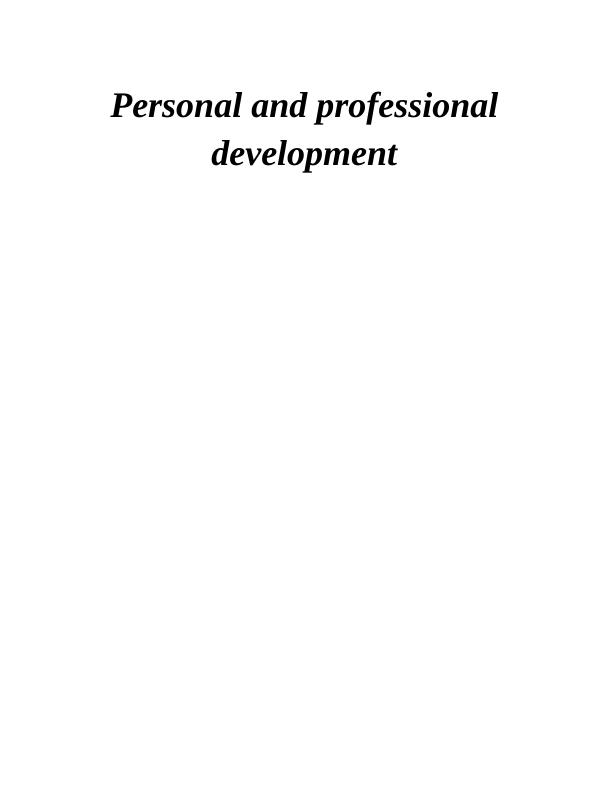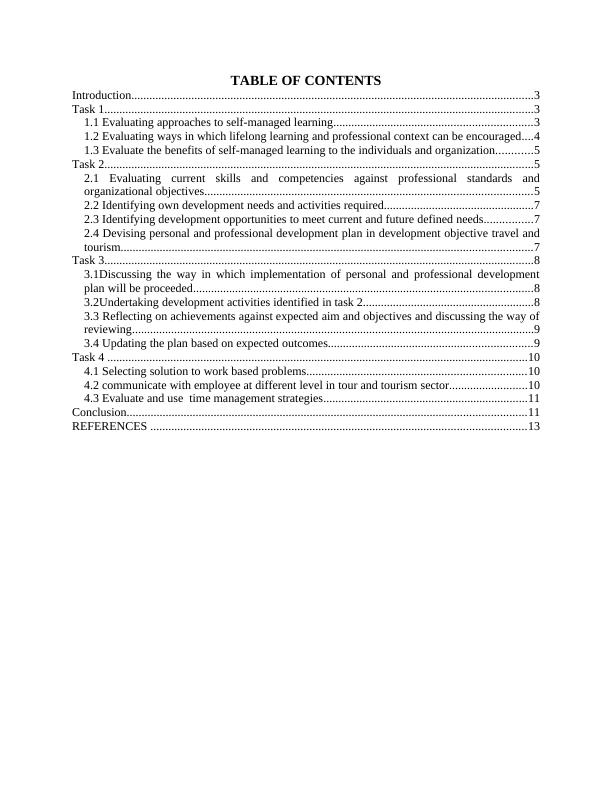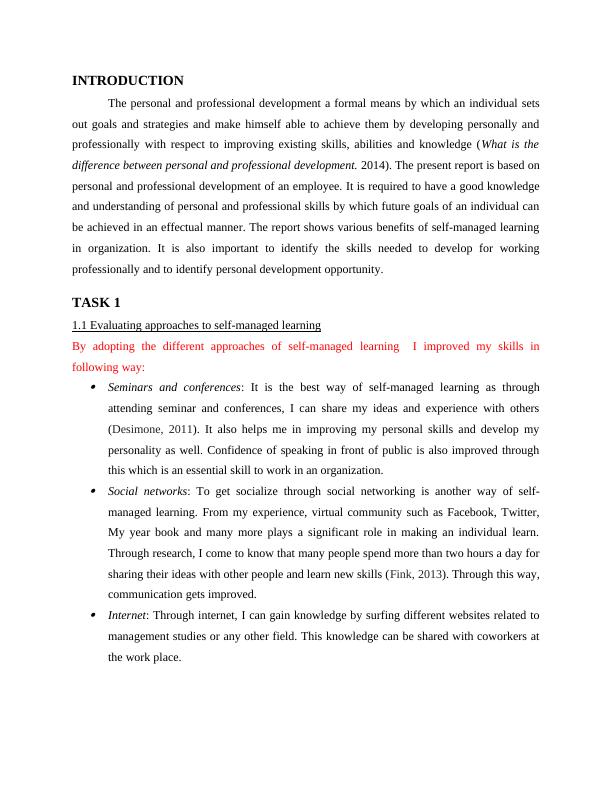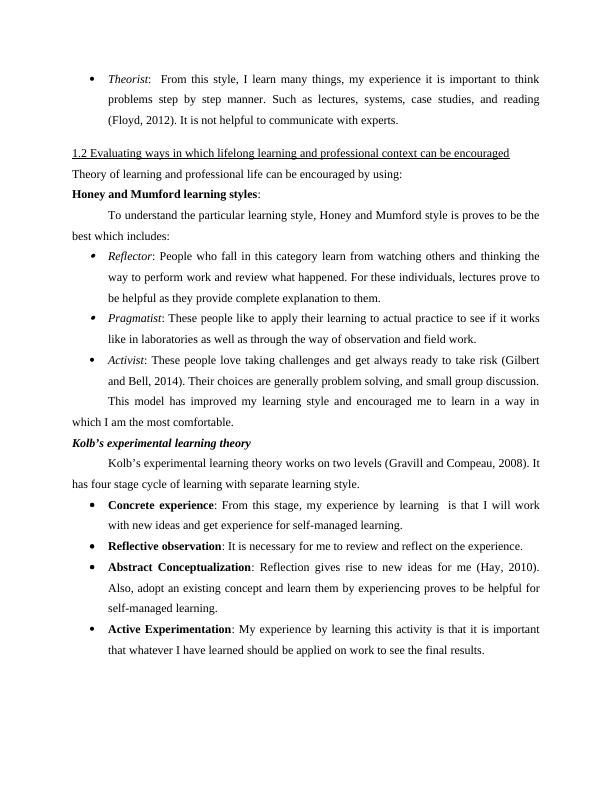Personal and professional development : Approaches to self-managed learning
Added on 2020-01-07
13 Pages4334 Words159 Views
Personal and professionaldevelopment

TABLE OF CONTENTSIntroduction......................................................................................................................................3Task 1...............................................................................................................................................31.1 Evaluating approaches to self-managed learning..................................................................31.2 Evaluating ways in which lifelong learning and professional context can be encouraged....41.3 Evaluate the benefits of self-managed learning to the individuals and organization............5Task 2...............................................................................................................................................52.1 Evaluating current skills and competencies against professional standards andorganizational objectives.............................................................................................................52.2 Identifying own development needs and activities required..................................................72.3 Identifying development opportunities to meet current and future defined needs................72.4 Devising personal and professional development plan in development objective travel andtourism.........................................................................................................................................7Task 3...............................................................................................................................................83.1Discussing the way in which implementation of personal and professional developmentplan will be proceeded.................................................................................................................83.2Undertaking development activities identified in task 2.........................................................83.3 Reflecting on achievements against expected aim and objectives and discussing the way ofreviewing......................................................................................................................................93.4 Updating the plan based on expected outcomes....................................................................9Task 4 ............................................................................................................................................104.1 Selecting solution to work based problems.........................................................................104.2 communicate with employee at different level in tour and tourism sector..........................104.3 Evaluate and use time management strategies....................................................................11Conclusion.....................................................................................................................................11REFERENCES .............................................................................................................................13

INTRODUCTIONThe personal and professional development a formal means by which an individual setsout goals and strategies and make himself able to achieve them by developing personally andprofessionally with respect to improving existing skills, abilities and knowledge (What is thedifference between personal and professional development. 2014). The present report is based onpersonal and professional development of an employee. It is required to have a good knowledgeand understanding of personal and professional skills by which future goals of an individual canbe achieved in an effectual manner. The report shows various benefits of self-managed learningin organization. It is also important to identify the skills needed to develop for workingprofessionally and to identify personal development opportunity.TASK 11.1 Evaluating approaches to self-managed learningBy adopting the different approaches of self-managedlearning I improved my skills infollowing way:Seminars and conferences: It is the best way of self-managed learning as throughattending seminar and conferences, I can share my ideas and experience with others(Desimone, 2011). It also helps me in improving my personal skills and develop mypersonality as well. Confidence of speaking in front of public is also improved throughthis which is an essential skill to work in an organization.Social networks: To get socialize through social networking is another way of self-managed learning. From my experience, virtual community such as Facebook, Twitter,My year book and many more plays a significant role in making an individual learn.Through research, I come to know that many people spend more than two hours a day forsharing their ideas with other people and learn new skills (Fink, 2013). Through this way,communication gets improved.Internet: Through internet, I can gain knowledge by surfing different websites related tomanagement studies or any other field. This knowledge can be shared with coworkers atthe work place.

Theorist: From this style, I learn many things, my experience it is important to thinkproblems step by step manner. Such as lectures, systems, case studies, and reading(Floyd, 2012). It is not helpful to communicate with experts.1.2 Evaluating ways in which lifelong learning and professional context can be encouragedTheory of learning and professional life can be encouraged by using:Honey and Mumford learning styles: To understand the particular learning style, Honey and Mumford style is proves to be thebest which includes: Reflector: People who fall in this category learn from watching others and thinking theway to perform work and review what happened. For these individuals, lectures prove tobe helpful as they provide complete explanation to them.Pragmatist: These people like to apply their learning to actual practice to see if it workslike in laboratories as well as through the way of observation and field work. Activist: These people love taking challenges and get always ready to take risk (Gilbertand Bell, 2014). Their choices are generally problem solving, and small group discussion.This model has improved my learning style and encouraged me to learn in a way inwhich I am the most comfortable.Kolb’s experimental learning theoryKolb’s experimental learning theory works on two levels (Gravill and Compeau, 2008). Ithas four stage cycle of learning with separate learning style.Concrete experience: From this stage, my experience by learning is that I will workwith new ideas and get experience for self-managed learning.Reflective observation: It is necessary for me to review and reflect on the experience.Abstract Conceptualization: Reflection gives rise to new ideas for me (Hay, 2010).Also, adopt an existing concept and learn them by experiencing proves to be helpful forself-managed learning. Active Experimentation:My experience by learning this activity is that it is importantthat whatever I have learned should be applied on work to see the final results.

End of preview
Want to access all the pages? Upload your documents or become a member.
Related Documents
Report On Importance Of Self Learning | Personal Developmentlg...
|14
|4576
|28
Approaches to self managed learning: Assignmentlg...
|15
|4816
|147
(PPD) Personal and Professional Development Assignmentlg...
|14
|4576
|28
(PDF) Personal and Professional Development Assignmentlg...
|20
|5132
|68
Approaches of Self-managed Learning - Reportlg...
|10
|2573
|31
Personal Professional Plan - Reportlg...
|14
|4589
|49
